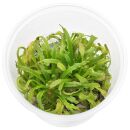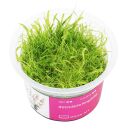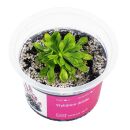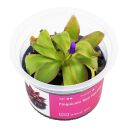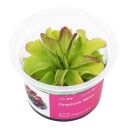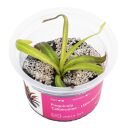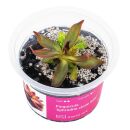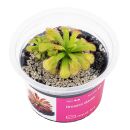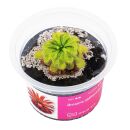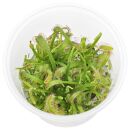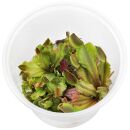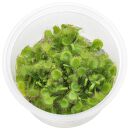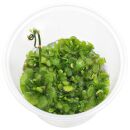Terrarium plants - Green up your terrarium!
One of the most popular types of plants are the "carnivorous plants". They are surrounded by an aura of the spectacular and also a little creep. Although the carnivorous plants "only" prey on animals ranging from the smallest to a few centimetres in size, they impress with their diversity and the sophistication of their capture mechanisms.
Animal-catching plants occur in most climatic zones of the earth, but in more or less nutrient-poor locations. These can be raised bogs, nutrient-poor ponds, damp sandy areas, trickling rocks or rainforests with poor, acidic soil. Very diverse and rich in form are, for example, the bladderworts (Utricularia) with their trap bladders, with aquatic, terrestrial or epiphytic species that flower beautifully. Even the humped or floating bladderwort (Utricularia gibba), which can sometimes be a nuisance in aquariums, can grow on merely wet surfaces and adorns itself with delicate yellow flowers. The butterworts (Pinguicula) belong to the same family. Generally known is the Venus flytrap (Dionaea muscipula) from the Atlantic coastal plain of the USA. Close to this are the countless, often small sundew species (Drosera), which are widespread from Australia, Africa and South America to the far north. Far larger are the tropical pitcher plants, or monkey cups (Nepenthes) with over a hundred species. They have a purely tropical distribution, especially on the islands of Southeast Asia. Similar "pitchers" have the trumpet pitchers (Sarracenia) from bogs in North America, which are not closely related to Nepenthes.
Carnivorous plants have a competitive advantage in nature because they have an additional source of nutrients at their disposal by catching and digesting animals. But they also photosynthesise like other plants and do not need to be fed in cultivation in order to thrive. The cultivation requirements can vary greatly depending on the species, but in general the substrate should not be too rich in nutrients.


